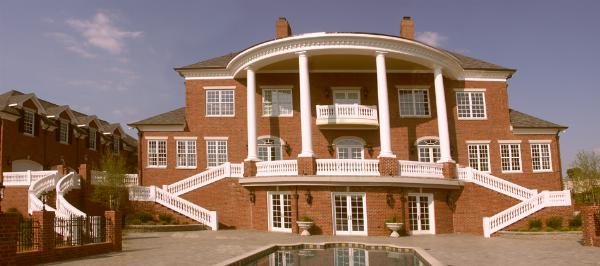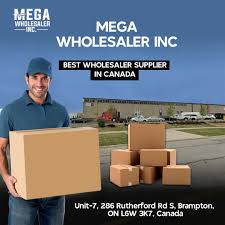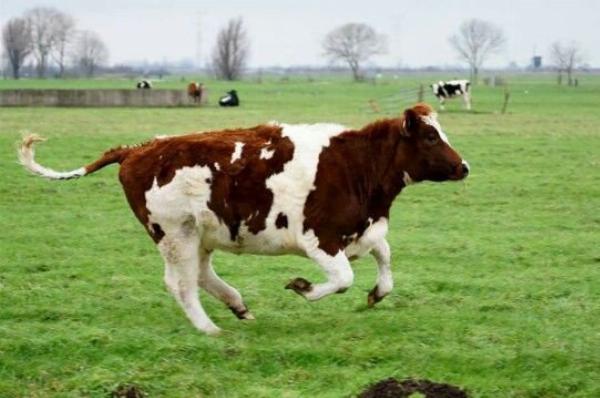Understanding Balustrades: Definition, Types, and Design Tips for Modern Architecture

Strong 8k brings an ultra-HD IPTV experience to your living room and your pocket.
Introduction
Balustrades are more than just functional elements in architecture; they are key design features that combine safety with style. These structures have been used for centuries to provide protection and add aesthetic value to various types of buildings.
Whether you’re working on a residential property, a commercial building, or a public space, understanding the meaning of balustrades can help you make informed decisions about your design.
What is a Balustrade?
Definition
A balustrade is a railing system that typically includes a series of vertical posts called balusters, a horizontal rail known as the handrail, and sometimes additional decorative elements like newels or caps. Its primary function is to provide safety by preventing people from falling off elevated areas, such as staircases, balconies, and terraces. However, balustrades also play a significant role in enhancing the visual appeal of a structure.
Historical Background
The concept of balustrades dates back to ancient civilizations, where they were used in architectural design to create secure barriers and add ornamental elements. In classical architecture, balustrades were often seen in grand staircases and terraces, reflecting the style and sophistication of the period. Over time, the design and materials used in balustrades have evolved, but their core purpose remains the same.
Components of a Balustrade
Balusters
Balusters are the vertical posts that make up the main part of the balustrade. They are typically spaced evenly and support the handrail. Balusters can vary in shape, size, and material, depending on the overall design and function of the balustrade.
Handrails
The handrail is the horizontal component that runs along the top of the balusters. It provides a place for people to grip for support and stability. Handrails can be made from various materials and are often designed to complement the style of the balusters.
Newels
Newels are the larger, often decorative posts that are placed at the ends of a balustrade or at intervals along a long run. They provide additional support and can be a focal point in the design.
Bases and Caps
The bases are the components that sit at the bottom of the balusters, anchoring them to the floor or other surfaces. Caps are placed on top of the balusters and newels, often adding a decorative touch.
Types of Balustrades
Traditional Balustrades
Traditional balustrades are characterized by their classic designs and materials, such as wood or wrought iron. They often feature intricate details and decorative elements that reflect historical styles.
Modern Balustrades
Modern balustrades embrace sleek, minimalist designs and often use materials like glass or stainless steel. They focus on simplicity and functionality, offering a contemporary look that suits modern architecture.
Glass Balustrades
Glass balustrades use panels of glass instead of traditional balusters. They provide an unobstructed view and a clean, modern aesthetic, making them a popular choice for contemporary homes and public spaces.
Metal Balustrades
Metal balustrades, made from materials like wrought iron, stainless steel, or aluminum, offer durability and strength. They can be designed in various styles, from ornate to minimalist, and are suitable for both indoor and outdoor applications.
Materials Used in Balustrades
Wood
Wooden balustrades are classic and warm, providing a traditional look. They can be crafted from various types of wood and finished in different stains or paints to match the desired aesthetic.
Metal (Wrought Iron, Stainless Steel, Aluminum)
Metal balustrades offer durability and a modern look. Wrought iron provides a classic, ornate appearance, while stainless steel and aluminum are known for their sleek, contemporary designs and resistance to weather.
Glass
Glass balustrades are valued for their transparency and modern appeal. They create a sense of openness and are often used in spaces where unobstructed views are desired.
Composite Materials
Composite materials combine different elements to achieve a balance of durability and aesthetic appeal. These materials can mimic the look of wood or stone while offering enhanced performance and lower maintenance requirements.
Balustrade Design Considerations
Aesthetic Appeal
When designing a balustrade, it’s essential to consider its visual impact. The style and materials should complement the overall design of the building or space, enhancing its aesthetic appeal without overwhelming it.
Functionality and Safety
The primary function of a balustrade is to provide safety, so it’s crucial to ensure that it meets all relevant building codes and standards. Proper spacing of balusters and height of the handrail are essential for effective protection.
Compliance with Building Codes
Balustrades must adhere to local building codes and regulations, which dictate specifications for height, spacing, and strength. Compliance ensures that the balustrade is safe and legally acceptable.
Applications of Balustrades
Residential Properties
In residential settings, balustrades are commonly used on staircases, balconies, and terraces. They provide safety and enhance the appearance of these features, making them both functional and stylish.
Commercial Buildings
Commercial properties use balustrades in various applications, including stairways, atriums, and outdoor spaces. Balustrades in commercial settings often focus on durability and maintenance, as well as aesthetics.
Public Spaces
Balustrades are also used in public spaces such as parks, museums, and government buildings. They play a role in ensuring safety while contributing to the overall design of the space.
Balustrades in Historical Architecture
Renaissance and Baroque Influences
Historical balustrades, particularly from the Renaissance and Baroque periods, are known for their elaborate designs and craftsmanship. They often feature intricate carvings and ornate details that reflect the grandeur of the era.
Examples of Historical Balustrades
Famous examples of historical balustrades can be found in iconic buildings such as the Palace of Versailles and the Vatican. These balustrades serve as a testament to the skill and artistry of past architects and craftsmen.
Maintenance of Balustrades
Cleaning and Care
Maintaining a balustrade involves regular cleaning to keep it looking its best. For wooden balustrades, this means dusting and occasionally polishing. Metal balustrades may require specific cleaners to prevent rust or tarnish.
Repairing Damage
Minor damage to balustrades, such as scratches or loose components, can often be repaired with simple fixes. For more significant issues, professional repair services may be needed to restore the balustrade to its original condition.
Preventing Wear and Tear
To extend the life of a balustrade, it’s important to address any signs of wear and tear promptly. Regular inspections and timely maintenance can prevent minor issues from becoming major problems.
Balustrades vs. Other Railing Systems
Comparison with Handrails
While both balustrades and handrails serve as barriers, balustrades typically include vertical posts and a horizontal rail, whereas handrails are often used alone for support. Balustrades offer more decorative options and can enhance the overall design of a space.
Balustrades vs. Guardrails
Guardrails are primarily focused on safety and are often used in more utilitarian applications. Balustrades, on the other hand, combine safety with decorative elements, making them suitable for both functional and aesthetic purposes.
Customizing Balustrades
Design Options
Customizing balustrades allows for a tailored design that meets specific architectural needs. Options include different materials, shapes, sizes, and finishes, ensuring that the balustrade complements the overall design of the space.
Custom Materials and Finishes
Custom balustrades can be made from unique materials or finished in special ways to achieve a particular look. This level of customization ensures that the balustrade fits perfectly with the desired design aesthetic.
Cost Considerations
Initial Cost vs. Long-Term Value
The cost of a balustrade can vary significantly depending on the materials and design. While higher-quality materials may have a higher initial cost, they often provide better long-term value through durability and lower maintenance needs.
Factors Affecting Cost
Factors such as material choice, design complexity, and installation requirements can affect the cost of a balustrade. It’s important to consider these factors when budgeting for a balustrade project.
Future Trends in Balustrade Design
Innovations and New Materials
Future trends in balustrade design include the use of innovative materials and technologies. Advances in materials science may lead to new options for durability, aesthetics, and functionality.
Design Trends
Design trends are constantly evolving, and balustrades are no exception. Current trends include minimalist designs, sustainable materials, and integration with smart home technologies.
Conclusion
Balustrades are a vital component of architectural design, combining safety and style in a way that enhances both function and aesthetics. Whether you’re updating an existing structure or designing a new one, understanding the meaning, components, and various types of balustrades can help you make informed choices. From historical influences to modern innovations, balustrades continue to be an essential element in creating safe and beautiful spaces.
FAQs
What is the primary purpose of a balustrade?
The primary purpose of a balustrade is to provide safety by preventing people from falling off elevated areas. It also serves as a decorative element in architectural design.
How do I choose the right material for my balustrade?
Choosing the right material depends on factors like the intended use, aesthetic preferences, and budget. Common materials include wood, metal, glass, and composite materials.
Are there specific building codes for balustrades?
Yes, building codes dictate specifications for height, spacing, and strength to ensure safety. It’s important to adhere to these codes for compliance and protection.
How can I maintain my balustrade to ensure longevity?
Regular cleaning, prompt repair of any damage, and preventive measures can help maintain a balustrade. Different materials require different care, so follow maintenance guidelines for your specific type.
What are the latest trends in balustrade design?
Recent trends include minimalist designs, the use of sustainable materials, and the incorporation of smart technologies. Innovations in materials and design continue to shape the future of balustrades.
Note: IndiBlogHub features both user-submitted and editorial content. We do not verify third-party contributions. Read our Disclaimer and Privacy Policyfor details.




